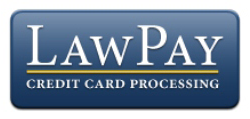
Chasing down non-paying clients is the bane of most lawyers’ existence. And when you’re already spending an additional three and a half weeks on unplanned work every year, it makes settling overdue accounts that much more frustrating.
While you may not be able to avoid ever having to deal with non-paying clients, here are three things you can do throughout a case to reduce the incidence of non-payment.
Thoroughly Discuss Terms During Client Intake
In your first meeting with a potential client, review a comprehensive list of your fees and payment expectations. Confirm she understands and feels comfortable with all aspects of the agreement. If she seems hesitant, ask her to share her concerns.
An open dialogue allows you to clear up misconceptions that can affect payments down the road. It also helps you determine if you need to provide a more limited scope of services, or if the potential client isn’t a good fit for your firm. If you and the client decide on a reduced scope, outline exactly what’s included in the agreement to guarantee you’re aligned from day one.
Communicate Regularly
The majority of the work you do for a client won’t be performed in front of her. So if she rarely sees you in person and your primary communication is an invoice with a single line item for “Services Rendered”, she may feel lukewarm about just cutting you a check, no questions asked.
Realistically, you can’t send daily updates to every client. But to prevent payment delays, at least ensure the important correspondence (i.e., billing statements) meets certain criteria:
1. Descriptive and easy to understand.
You don’t have to outline your time to the minute, but use separate line items for the larger tasks and include a brief summary of what you did. As much as possible, avoid legal jargon. If you use too much technical language, your client may end up with even more questions. (Having these details documented can also be helpful if a client attempts to contest a charge in the future.)
2. Delivered electronically and via postal mail.
Letters still sometimes get lost in transit and emails can get caught in SPAM filters. So always send digital and hard copies of every invoice and keep records of when each was sent. Not only does this help you accommodate the preferences of both older and younger clients, but it also makes it more difficult for a client to claim she never received a statement.
3. Sent at approximately the same time each month.
As part of your intake process, establish when the client would prefer to receive her invoices. When she can pay you is likely impacted by when she gets paid. Thus, if you can ensure your invoice arrives consistently around the same date there’s a greater chance she’ll be able to properly budget for it.
Be Flexible About Payments
Ideally, every client would you give you a lump sum at the beginning of the agreement that would adequately cover your costs even if you didn’t receive another dollar. Realistically, this isn’t feasible for everyone.
One option is to have the client pay as much as she can up front and then establish an “evergreen retainer.” With an evergreen retainer, the client agrees to maintain a predetermined minimum balance in her trust account and replenish the funds when they fall below that amount. Evergreen retainers allow clients to secure your services without enduring financial hardship while still allowing you to get started on their case without risking non-payment.
Offering multiple payment methods can also decrease opportunities for delinquent accounts. While cash and checks are the standard, for many Americans they’re becoming increasingly less popular ways. In fact, only about half of all U.S. adults make sure they have cash on hand.
Consequently, a growing number of law firms are now accepting credit card and eCheck payments. And the most forward-thinking practices use online payment solutions, which make it even easier to avoid non-payment. With an online payment solution, you can accept payments in-person or on a secure payment page. You can also save yourself time by automating your invoicing and billing processes.
Unfortunately, there will likely be instances where you make the payment process as easy as possible and clients still don’t pay. While unpleasant, collections are part and parcel of running your own business. However, if you follow this advice, you’ll be in a position where dealing with non-payment can be a little less painful and far less frequent.
About the Sponsor
LawPay has worked closely with its bar partners, their ethics committees, and their practice management divisions to ensure our program meets every need for attorneys accepting credit cards.
Sponsored Post
Sponsored posts are paid advertisements. To sponsor a post for your product or service, please get in touch.





















Comments are closed automatically 60 days after the post is published.